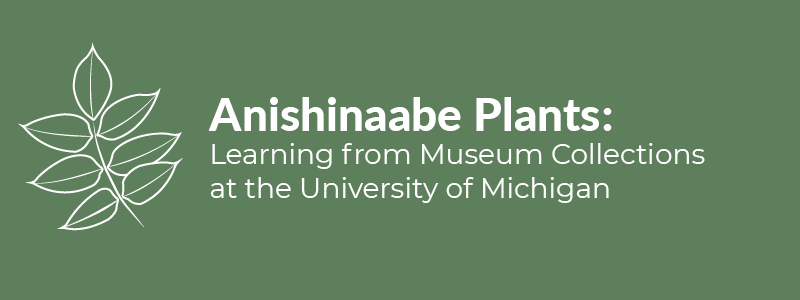Terms
Anishinaabe is the name for culturally and linguistically related tribes (US) and First Nations (Canada) whose traditional homelands are concentrated in areas surrounding the Great Lakes. Anishinaabek (plural for Anishinaabe, also spelled Anishinaabeg) are three related groups: the Ojibwe (also known as Ojibwa, Chippewa, or Saulteaux), Odawa (also known as Ottawa, or Odaawaa), and Potawatomi (also known as Bodewotomi, Pottawatomi, or Pottawatomie). These groups are also collectively known as the Council of the Three Fires. Anishinaabemowin is the language spoken by the Anishinaabek.
Comparative collections are used to classify or identity fragmentary remains by comparing them with known specimens. For example, to identify what type of plants were used at archaeological sites, archaeobotanists compare the archaeological plants fragments with specimens of a known genus and species. To learn how archaeobotanists (also called paleoethnobotanists) analyze ancient plant remains, watch this video.
Ethnobotany is the study of the traditional knowledge and uses of plants and also studies the interrelationship between people and plants. Non-western cultures have been the focus of many ethnobotanical studies. This term is also important for understanding the organization of UMMAA collections. The ethnobotanical collection include portions of plants (e.g., bark, roots, wood), herbarium sheets, and prepared plants (e.g., black ash basket splints), which were originally stored in the Ethnobotanical Laboratory. The finished objects (e.g., baskets and mats) were classified as ethnographic and stored elsewhere. With the move to the Museum Research Center, these collections are now stored in the same space but usually in different cabinets that reflect the history of the organization when the collections were in the Ruthven Museum Building.
Ethnography is a branch of anthropology that describes the customs and cultural traditions of individual groups. For the UMMAA collections, the word ethnographic is used to refer to an object collected from a living or historical non-western culture, in contrast to archaeological collections. In the UMMAA collections, ethnographic objects are organized by material type (e.g., pottery, baskets, textiles, etc.) and the region where it was collected from.
